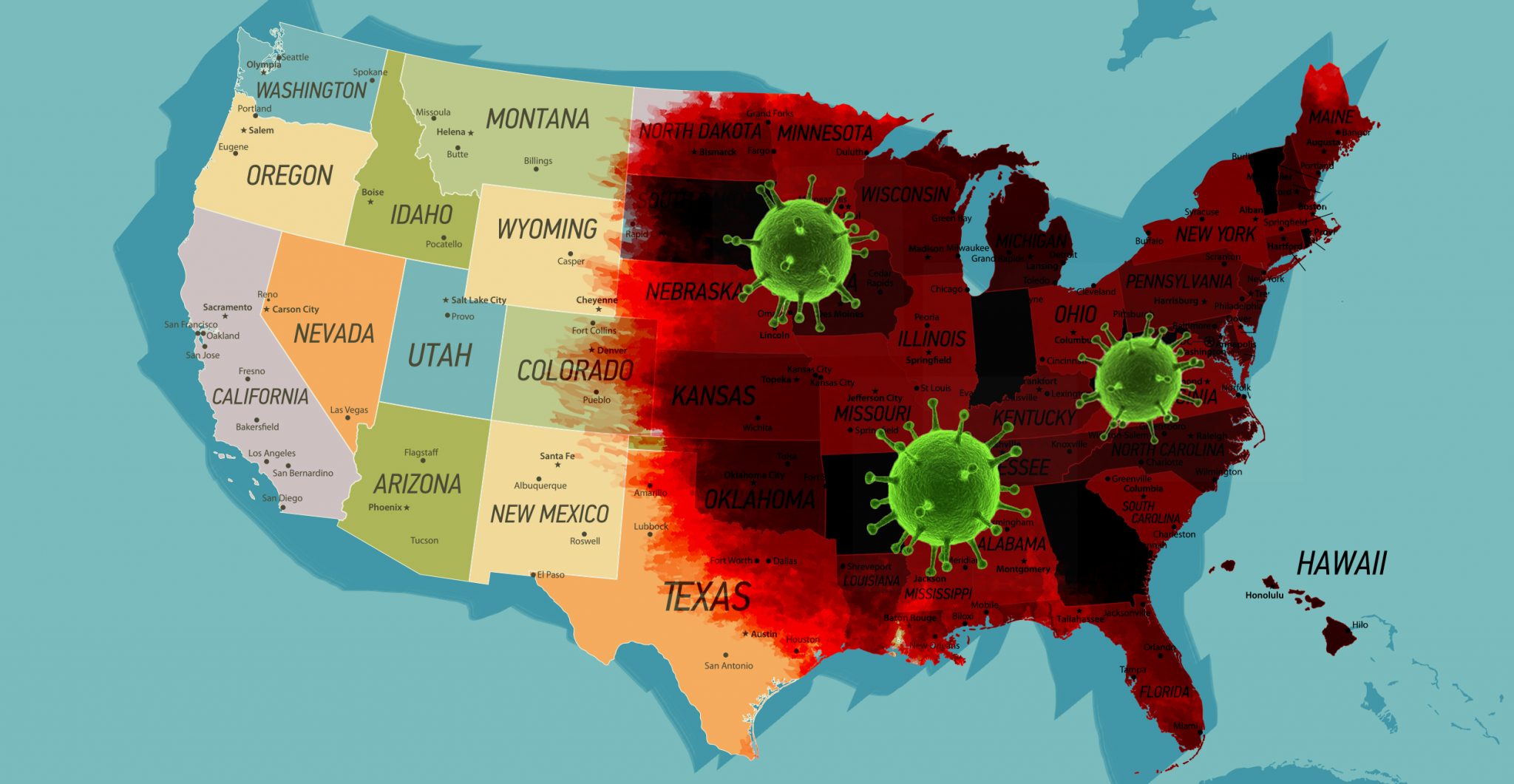The most deadly pandemic in history was the Spanish flu that ravaged the world in 1918-1919. It came about just as the United States was fighting in World War I, and the pandemic killed fifty million people, more than both world wars combined. At one point up to one-third of the world’s entire population was infected, an estimated 500 million people.
The country of origin of the Spanish flu was never identified, but some believe it may have come from Asia or even the United States itself. Haskell County, Kansas has been brought up as the possible origin point, specifically due to its hog ranches and the fact that 17 bird migratory routes pass through it. Camp Hunston, also in Kansas, was another location some believed to be the place of origin where American soldiers first brought the flu to Europe, and hence the world, when they arrived there as WWI soldiers.
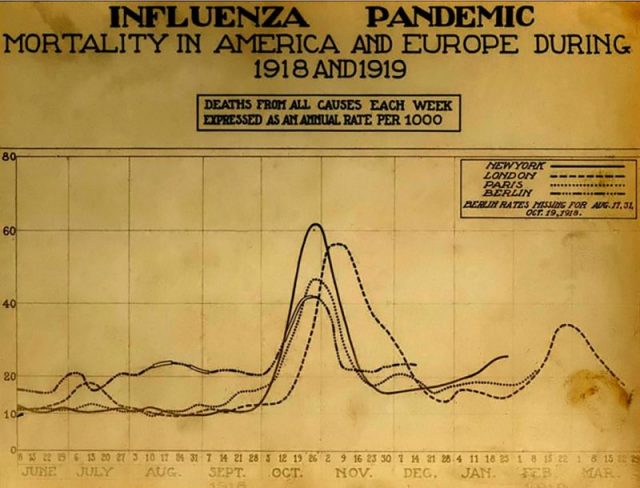
It was avian borne, meaning it came from birds, and, expectedly, there were much higher death rates among children younger than five years old and those over sixty five, according to the CDC; unexpectedly, the other group with high death rates was the twenty to forty age range. Most surprising was that so many who died were otherwise healthy.
There were no medicines to treat the virus and health officials were limited to disinfectants, quarantine, and hand washing. Unfortunately the flu outbreak coincided with thousands of soldiers going to and from Europe to serve in World War I. The first cases were at Camp Funston in Fort Riley, Kansas beginning with about one hundred soldiers and increasing exponentially within the first week. Not only were American soldiers traveling away from home for the first time, but British and Europeans were moving around the globe as well.
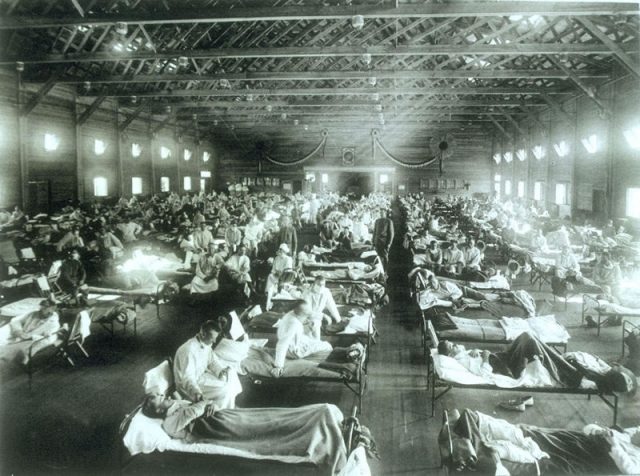
Influenza was rampant in France, Africa, Mexico, Iran, and Switzerland. In smaller villages everyone died. The flu came and went around the United States and Europe between April and September of 1918, then seemed to slow until another breakout occurred at Camp Devin Army Base in Massachusetts. This breakout proved to be the most lethal, killing seven hundred and fifty-seven at the camp alone in the first few weeks. In the month of October, about one hundred and ninety-five thousand Americans died of influenza and the nationwide military draft was suspended.
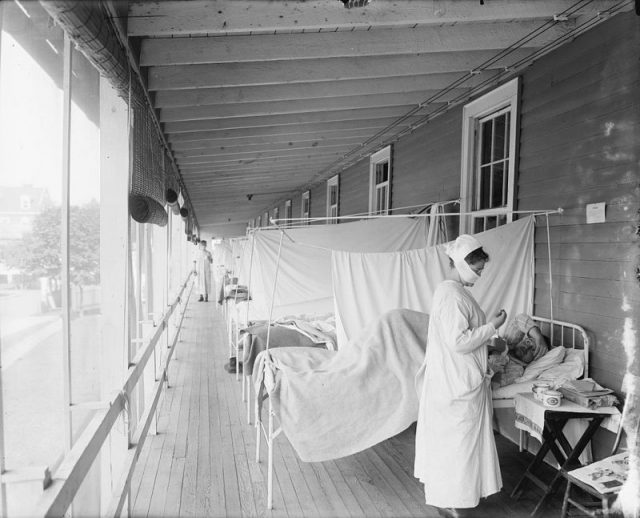
With many of the able nurses away at war, a nursing shortage caused the American Red Cross in Chicago, Illinois to put out a call for volunteers, but even though certified black nurses were available they were not utilized. The city cancelled all public gatherings and closed the theatre and movies.
After a Navy ship came into the Philadelphia harbor from Boston, according to Smithsonian Magazine, in order to keep the people of Philadelphia calm, Wilmer Krusen, the Public Health Director, claimed there was nothing to be concerned about, a policy the government had begun to curb panic. They tried to cover up the deaths of two sailors by denying it was the Spanish flu.
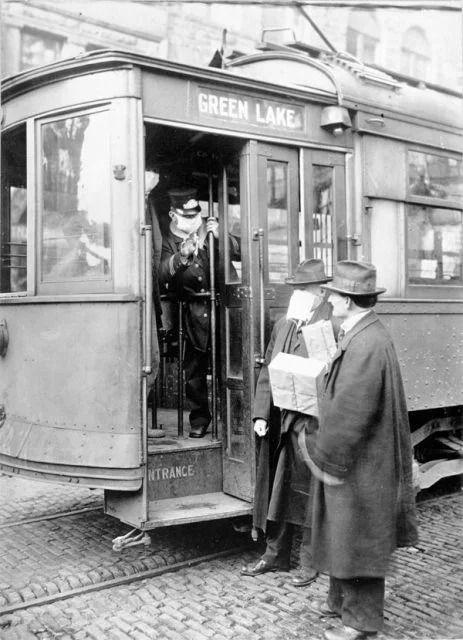
Fourteen cases resulting in death were reported the next day and more as the days went on. Interesting Engineering states that dead bodies were piling up with nowhere to keep them until they could be buried, so cold storage facilities were commandeered, and a local trolley manufacturer gave two hundred packing crates to use as caskets. A big parade was scheduled in Philadelphia for September 28, and Krusen refused to cancel. Newspapers refused to print articles written by doctors, according to Smithsonian Magazine, so the parade went ahead and within six weeks over twelve thousand people were dead.
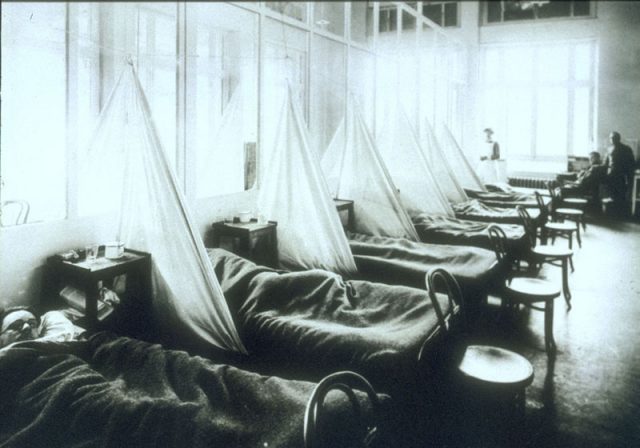
Just as the pandemic had begun to slow down, the war was over, and more than four million soldiers were traveling from Europe back to the United States in the close quarters of ships and then the barracks of the army base where they were discharged. In Salt Lake City, Utah, over two thousand homes were quarantined by the end of November. January of 1919 saw another rise in flu cases and deaths that lasted until that summer when the pandemic finally wound down.
Related Article: Return of Medieval Diseases Feared in California
Each wave of the pandemic saw a change in the virus as it mutated and killed more and more people, yet the government did its best to downplay the situation. In the end the 1918-19 Spanish Flu pandemic died out on its own, but the lessons to be learned from history should show the importance of keeping informed and being prepared.
